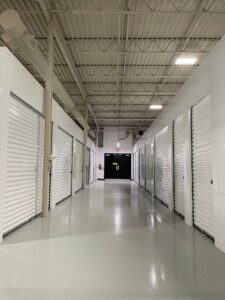Climate Controlled Storage
Storage facilities that are climate controlled, like A2 Art Storage, control the Relative Humidity and temperatures throughout their facilities. In any region where the elements naturally fluctuate, one’s personal valuables that require special care could be negatively affected. It is important to consider the needs of your object when finding suitable storage solutions near you.

Relative Humidity
Relative Humidity (RH) in any space can fluctuate rapidly based on the natural elements. This can cause stress on objects. If an RH is too low, it can be too dry for objects and embrittle certain materials. Too high of an RH can create mold growth and corrosion of metals due to thick moisture. Maintaining the perfect amount of moisture in the air is vital to the survival of precious items, i.e. fine art.
Temperature
Temperature fluctuations are most likely to affect the “natural aging” of objects. Cooler temperatures tend to help preserve materials. However, too cold and materials like wax or plastic can freeze and break. Too hot, and those same materials can melt. High temperatures will speed up natural chemical deterioration and in conjunction with RH, can begin natural degradation.
Objects that would benefit from climate controlled storage
When considering climate controlled facilities, like A2, here are some examples of objects that typically benefit from such care.
-

Artserve moving fragile American Flag piece. Photo by Glenn Stubbe, 2012 Art: Artwork can contract or expand with changes in humidity and temperature.
- Electronics: If maintained in an unsuitable environment for a long time, electronic devices, i.e. circuiting components, will mold or oxidize.
- Fabrics or papers: Delicate fabrics or papers can mold in humid environments, while excessive temperatures can cause paper to discolor.
- Vinyl: The risk of warping increases with varying temperatures, whereas the chance of breaking increases with decreasing temperature.
- Antique wood or metal items: All metals will oxidize and change color in response to moisture. Wood will expand and contract in response to temperature, making it vulnerable to rot and mold.
